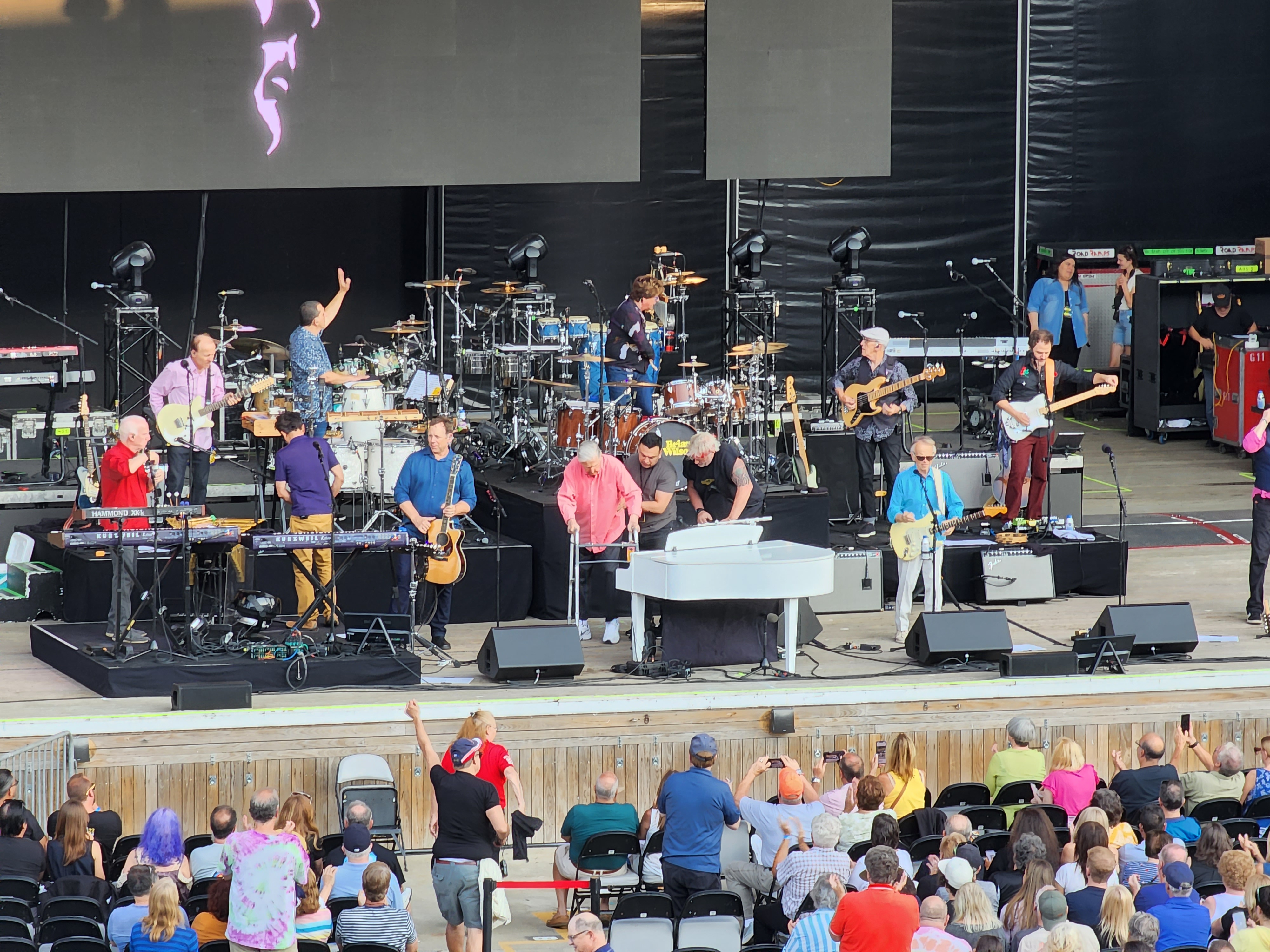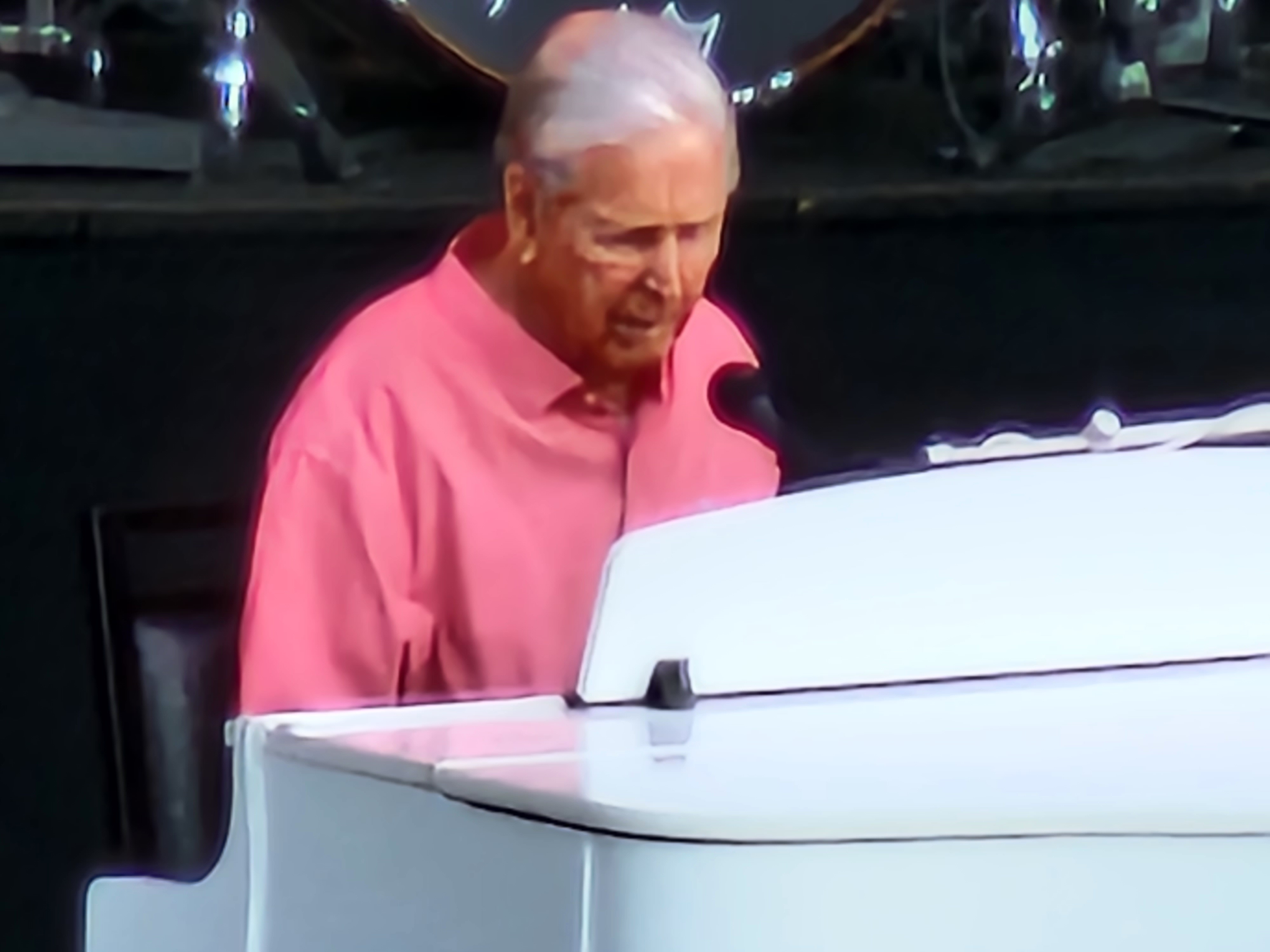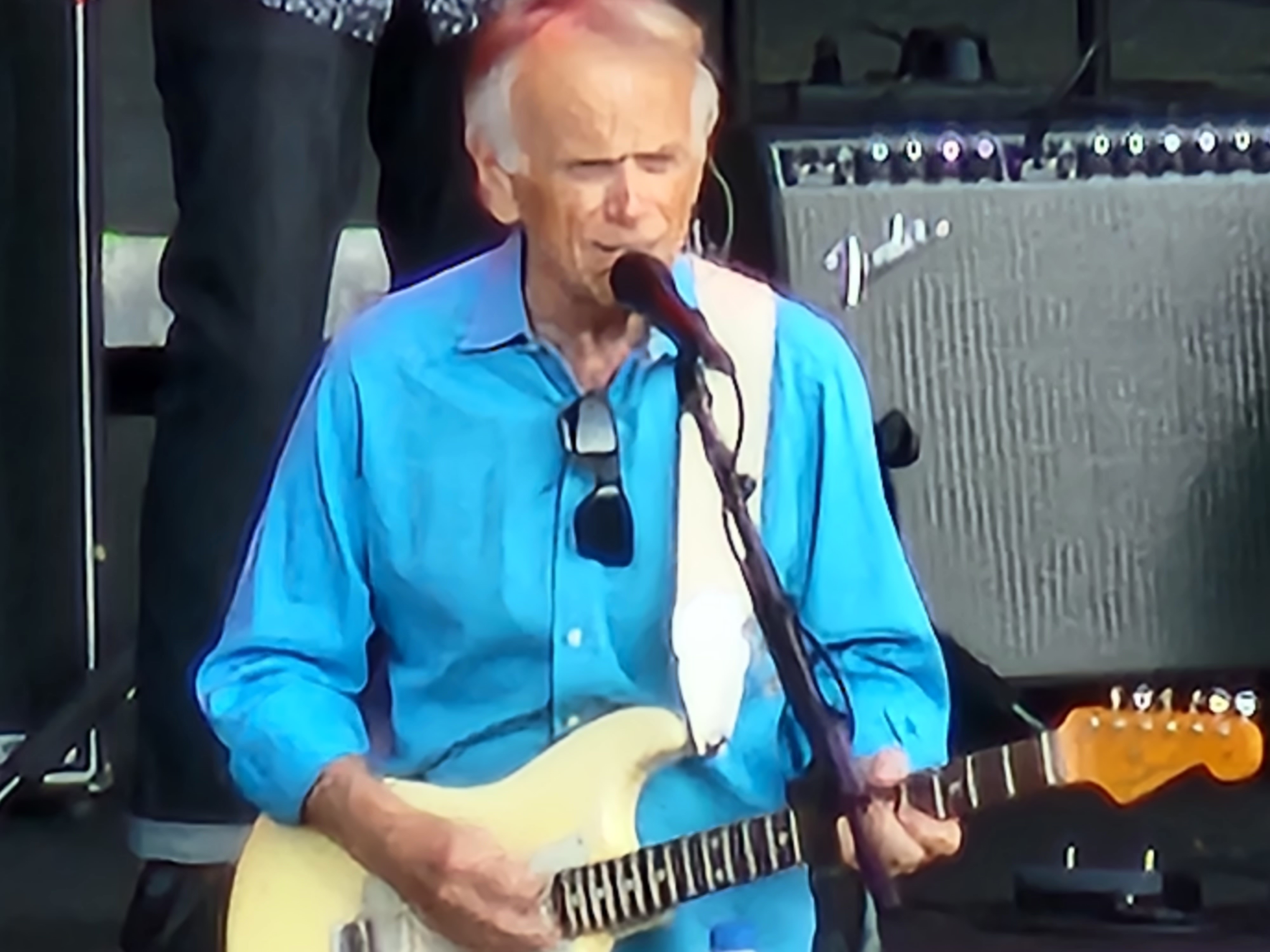Wait, Samsung Galaxy S22 Ultra Space Zoom can follow moving objects?
We've established that Samsung Galaxy S22 Ultra's 100x Space Zoom is a photographic and technical marvel, but it has one trick up its sleeve that I didn't notice until recently.
I've been using Samsung's big-screen Note-in-disguise Android 12 phone for five (mostly uneventful) months, but not consistently. The 6.8-inch device is, at 228 grams, a little heavy, especially compared to my 6.1-inch, 204-gram iPhone 13 Pro. Still, whenever I want the best in smartphone zoom photography, there is no other choice.
When I bought tickets to see Brian Wilson (of the Beach Boys) and Chicago (of 21 top 10 singles) at Jones Beach Theater in New York, I decided to carry the Samsung Galaxy S22 Ultra with me because its 10x optical, and 30x-to-100x Space Zoom blow away the iPhone's long-distance photography. Considering my nose-bleed seats (nope, not gonna pay $200 for orchestra), if I wanted any decent shots of the band on stage, I couldn't rely on the iPhone 13 Pro's 3x optical zoom and 15x-max digital zoom.
Like binoculars



As soon as the legendary and now 80-year-old Brian Wilson scooted up to his all-white piano, I started using the Samsung Galaxy S22 Ultra's zoom and big screen as digital binoculars. With 10x zoom, I felt like I was sitting in the orchestra. With 30x Space Zoom, I took a seat on the stage, and with 100X Space Zoom, I was on top of Wilson's piano, staring into his face.
To be clear, the image quality differences between 10X and 30X or 100X can be quite stark. 10X is using Samsung's pericope lens and prism technology to deliver excellent optical zoom. No interpolation, just 10MP of pure image data. 30X and 100X look decent unless you blow them up to full size, where the details tend to look more like an image as interpreted by an abstract painter or even DALL-E.
Watch him move



The further you zoom, the more slight movements of your hand can throw your subject out of frame. The Galaxy S22 Ultra, though, does an excellent job of optical and electronic image stabilization. Brian Wilson helped my cause by performing his entire 45-minute set while seated behind that white piano.
Chicago, though, was a different story. Current lead singer Neil Donnell roamed the stage throughout the band's set. Initially, because I didn't know who he was (longtime lead Singer Peter Cetara departed in 1985 and since then Chicago has had a revolving door of frontmen), I didn't bother with 30x or 100x zoom.
Eventually, though, I decided to follow the powerful singer with the phone's Super Zoom. First I hit 30X, but it wasn't until I tried 100X that I noticed something startling. Even as I held the Galaxy S22 Ultra perfectly still - or as still as my half-century hands are capable - the phone's camera casually followed Donnell as he walked from one side of the stage to the other.
I didn't realize it at first. I just watched Donnell sing and walk and it wasn't until I noticed the back of the stage was moving to the left behind him that I realized the phone's camera had locked onto Donnell and was tracking him.
But how

To understand how the Samsung Galaxy S22 Ultra's camera can track moving objects, you have to accept that the phone's 30X and, especially 100X space zoom are highly interpolated images where the Qualcomm Snapdragon 8 Gen 1 chip-level Computer Vision is constantly at work figuring out what you're looking at - is it a planet, a person, a bird - and what it might be doing.
When I asked Samsung about the capability, they confirmed that Space Zoom uses both OIS and EIS to reduce shake and blur. The tracking I was seeing is a product of Tracking Auto-Focus in which the cameras attempt to adjust the framing to keep the subject in focus and - in my experience - in the frame.
With Donnell filling the frame, the Samsung phone accurately assumed that he was my subject and, without asking me, kept him centered in the frame as he tried to walk out of it. This capability made it possible for me to capture a series of photos of the singer in motion. Granted, the quality is Van Gogh-esque, but if I was trying to capture a 100x optically zoomed image of someone in motion, I probably wouldn't have anything to show you.
This tracking does not work in video, which tops out at 20x interpolated zoom, but it is repeatable in a number of different still-image scenarios.
When I got back to the city, I took the Galaxy S22 Ultra to Bryant Park, which has a huge lawn in the middle of it. I stood on one end and focused on the other end, where people were walking back and forth. Using 100x zoom, I would pick a walker and then wait for the phone to track them. It did every time but would stop when they walked too far out of frame. I suppose that if Donnell had walked off stage, the Galaxy S22 ultra would've stopped tracking him, too.
What to do with it
100X interpolated zoom isn't the right photographic tool for every job, but it is effective for astrophotography and in situations like concerts where, more than likely, you're not sitting in the front row, the 10th row, or even the 50th row.
The image quality is what you might expect from Computer Vision. In situations where it can fill in the blanks with what it knows of a subject, the results can be impressive (I think the moon looks great because Samsung's AI knows what the moon should look like) but it will struggle, for instance, with a relatively new Chicago singer that even I couldn't readily identify.
If you want to compare all the best smartphone cameras, and see which ones push the optical-zoom envelope, read our roundup of the best phones.
from TechRadar - All the latest technology news https://ift.tt/Li3YFfH

Comments
Post a Comment